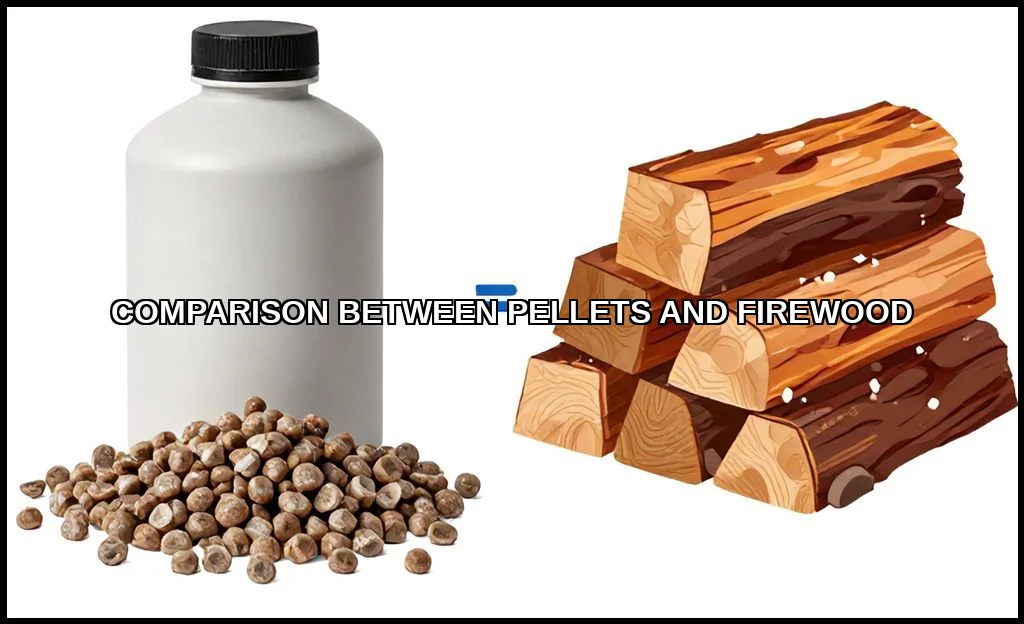Choosing how to heat your home is a big decision. It’s about comfort, cost, and your lifestyle. The debate between pellets and firewood is a classic one, with passionate advocates on both sides. It’s not just about throwing logs in a stove anymore. Modern heating involves understanding fuel types, equipment efficiency, and long-term value.
For those seeking a clean, automated heating solution, a pellet stove is a compelling option. Many homeowners find a model like the Castle 41278 Serenity strikes a great balance between heating power and user-friendly operation. It’s a solid example of how pellet technology has evolved. But is it the right choice for you? Let’s break down the details.

The Core Heating Debate: Pellets vs. Firewood
This isn’t a simple question. Your choice impacts your wallet, your time, and your carbon footprint. We’ll compare everything from the initial stove cost to the feel of the heat. The goal is to give you the clarity to choose your ideal home heating partner.
Cost Breakdown: Initial Investment & Ongoing Fuel Expenses
Your budget plays a starring role. The pellet stove vs wood stove decision starts with equipment price. Generally, a high-quality pellet stove has a higher upfront cost than a comparable wood stove. You’re paying for the automated feed system and electronics. But that’s only part of the story.
The real math happens with fuel. Wood pellets cost is typically more stable and predictable than firewood. You buy bags by the ton. Firewood prices can swing wildly based on region, season, and whether it’s seasoned. Ask yourself: are wood pellets cheaper than firewood for heating in your area? Often, pellets win on consistent cost-per-BTU, but cheap or free firewood can change the game entirely.
- Pellet Stove: Higher initial cost, stable fuel prices, requires electricity to run.
- Wood Stove: Lower initial cost, variable fuel prices, completely off-grid capable.
Heat Output & Efficiency: BTUs, Moisture, and Burn Time
This is where science meets your living room. The heating value of fuel is measured in BTU (British Thermal Unit). Dry, seasoned hardwood has a high firewood BTU rating. But here’s the catch: moisture content is the enemy of efficiency. Wet wood wastes energy boiling off water before it can heat your home.
This is a key advantage for pellets. They are manufactured with very low, consistent moisture content. This leads to higher pellet stove efficiency ratings, often between 70% and 90%. A modern wood stove can be efficient too, but it depends heavily on your fuel quality and burning technique. For consistent, whole-house heat, many wonder about a pellet stove vs wood stove for whole house heat. Pellets, with their steady, automated feed, often provide more even, long-lasting warmth.
| Factor | Wood Pellets | Seasoned Firewood |
|---|---|---|
| Typical Efficiency | 70-90% | 60-80% |
| Moisture Content | <8% (manufactured) | 15-20% (if properly seasoned) |
| Heat Consistency | Very steady | Cyclical (peaks and valleys) |
Convenience & Labor: Storage, Handling, and Maintenance
How much work do you want to do? Heating with wood is a physical, hands-on process. It involves cutting, splitting, stacking, and carrying. Firewood storage requires significant dry spacea shed or covered rackfor at least six months to season properly. Learning how to store firewood vs wood pellets is crucial. Pellets need a dry indoor space; a basement corner or garage will do.
Pellet stoves offer an automated feed from a hopper. You load bags every day or two, and the stove controls the fuel rate and air flow. It’s a “set it and forget it” experience. The trade-off? You have to empty the ash residue pan more frequently, though pellet ash production is typically less than from wood. A wood stove gives you longer burn times per load but requires daily ash cleaning and more frequent loading.
Pellet Fuel Pros and Cons: A Quick List
- Pros: High efficiency, convenient, clean-burning, consistent heat.
- Cons: Requires electricity, higher upfront cost, reliant on manufactured fuel supply.
Environmental & Safety Considerations: Emissions, Sustainability, and Air Quality
This is a nuanced part of the biomass fuel comparison. Both are carbon-neutral in theory, as they release carbon recently absorbed by trees. But the details matter for the environmental impact of wood pellets vs split logs.
Pellet stoves burn very cleanly due to low moisture and controlled combustion. They produce minimal smoke and particulate matter. Wood stoves, especially older models, can be significant polluters if burned poorly. The EPA has strict standards for new stoves. For the latest on health and safety, the EPA’s official source on burning is an essential read.
Sustainability questions exist for both. Are pellets made from sustainable forestry byproducts or from whole trees? Is your firewood sourced locally from managed forests? These are questions you can ask suppliers. It’s also worth considering other heating pros and cons, like electric options, for a full picture. For instance, knowing what makes a good water heater can inform your overall home energy strategy.
Finding Your Home’s Best Heat Source
So, which is the winner? There isn’t one. The best choice lives at the intersection of your priorities. If you value automation, consistency, and have a reliable power source, a pellet stove is a fantastic modern solution. It turns heating into a background task.
If you relish the ritual, have access to affordable wood, and want complete independence from the grid, a wood stove offers timeless appeal and resilience. The crackle of a real wood fire is a sensory experience pellets can’t replicate.
Your local climate, home layout, and personal willingness to engage with your heat source are the final deciding factors. Weigh the initial investment against long-term fuel costs. Consider the feel of the heat you want. Understand the labor involved. Then, you can move beyond the debate and into a warm, comfortable winter.
